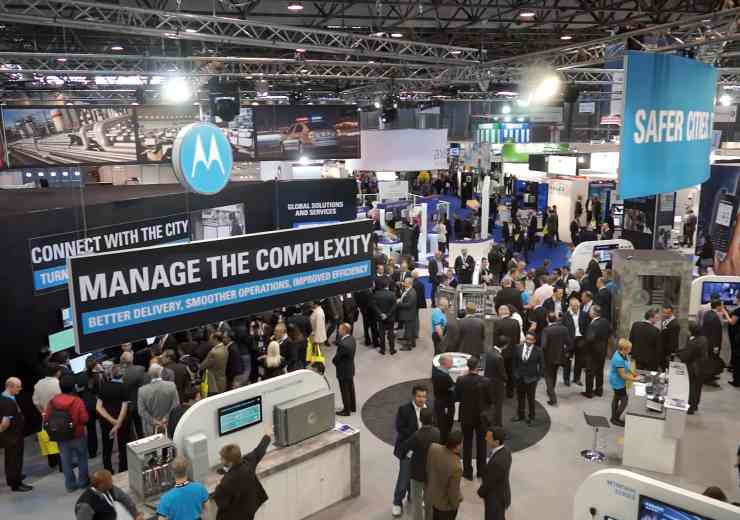
Future of resilience in communications
Blended communications
Without a working and effective communications system, an emergency response operation will not be able to be carried out properly. As Jackson White points out, blended communications is important because it delivers the ability to fuse data – where different architectures, devices and systems all deliver data to one system – which gives security organisations a tactical advantage. It provides the ability to handle, manipulate and analyse data from a myriad of systems and IoT devices – ANPR, CCTV, bodycams, smart devices, AR etc. This form of blended communications gives operational advantages and provides greater inherent resilience because of how it draws down and disseminates data and communications.
A strategy around blended communications needs to recognise the vital role of inter-agency interoperability in terms of how the services work together on operations and the communications protocols they use. The differing communications systems and the differing procurement cycles of government departments means that we’re not going to see a common architecture at any time soon. Consequently, the security services base their planning for resilient communications on open architecture that will allow all key stakeholders to integrate their communications.
Innovative technologies
Designed with ease of use in mind, Excelerate’s new Portable Hub enables real-time data, video and voice applications – with enhanced roaming capability. This smart 4G Hub can plug in to any fleet vehicle or be deployed elsewhere within the incident ground for enhanced and extended communications capability. Connex Hub, a vehicle-based compact box, has the addition of a built in CPU for Excelerate’s Digital Dashboard Management Interface (DDMI). DDMI, combines all systems and applications in to one easy-to-use interface and is currently being utilised by the majority of our customer base. This solution is fully scalable and customisable to user-needs and supports 3rd party integration.
Returning to radios, last year’s release of the Hytera PDC760 advanced multi-mode radio was a game-changing moment for the radio industry. It not only provides a fully featured DMR radio for true critical narrowband voice communications but it also combined a full-sized Android smartphone, opening up the possibilities for data rich organisation-specific platforms, such as building management, customer relationship management or point-of-sale applications. The next evolution in radio is the arrival of LTE, or PTT-over-cellular, devices. These devices communicate to a server in a data centre over Wi-Fi or a 4G/LTE network. This will mean that traditional radio coverage constraints no longer exist, whilst also opening up the possibilities for convergence with other platforms, applications and systems.
Jackson White, Getac UK
Jackson White is business development director at Getac UK where he is responsible for growing the organisation’s defence, security and first responder customer base. After joining the Royal Corps of Signals at 16, where he looked after general communication systems, Jackson supported Special Forces operations for 10 years. He then moved into the corporate world where he oversaw future technologies and innovation for video surveillance and communications systems organisations.
Final thoughts: “Rolling out a new system can take 18-24 months, by which point the technology can be almost obsolete. We see that time and again with delays to deploying any bleeding-edge infrastructure, where the desire to deploy the newest technology is thwarted by the time it takes to build and deploy it. So open architecture provides the means to ensure robust, future-proofed systems, while also fulfilling the need for backward compatibility. It’s our strategy to be compatible with legacy, current and future technologies, so we never force in the latest technology at the cost of legacy. We find a way to enable both.”
Nick Paris, Roadphone NRB
Nick Paris is one of the radio industry’s most experienced system designers. Nick has designed, installed and supported systems using a wide range of technologies, from conventional analogue, MPT1327, DMR Tier II and Tier III solutions. His installation experience includes large skyscrapers in London’s financial district and nuclear power stations. He also sits on OFCOM’s technical advisory group, and has pioneered the design and specification of Endurance Technology®.
Final thoughts: “Equipping users with lots of pieces of technology, each with their own specific function, is expensive, difficult to maintain, and lacks the level of cross-platform integration required for an efficient workplace. Providing users with one reliable device such as the Hytera PDC760 which fulfils all of their needs, operating on a clients wholly owned resilient critical infrastructure whilst also allowing access to data rich third party services is a very compelling option.”
Simon Hill, Excelerate Group
Simon Hill is an experienced technical director at Excelerate Technology Ltd, with a demonstrated history of working in the telecommunications industry. Simon is skilled in service delivery, technical support, mobile communications, Radio Frequency (RF) and VSAT.
Final thoughts: “As technology becomes smaller, innovation has continued to grow with the launch of a number of new products. The demand for these solutions is rising, as responders adopt a more digital way of working and with a need for portable devices that can be used on the move – feeding back information en route to speed up processes, enabling more efficient working, supporting interoperability and improving overall safety. We are continually developing offerings to ensure that customers have the right solutions to address their converged technology needs. Our in-house R&D department monitors leading edge technologies to understand if they can benefit our customers and complement our overall offering.”
Pages
digital issue



















